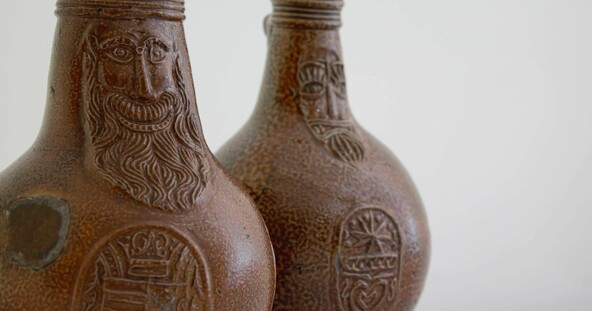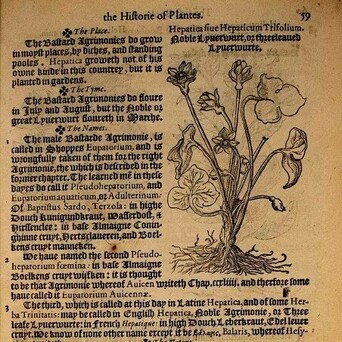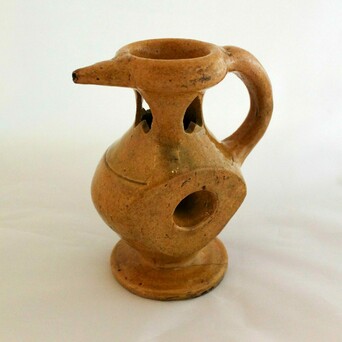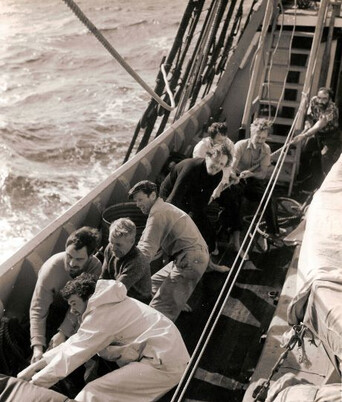
Collections
Plimoth Patuxet Museums houses significant archaeological, cultural heritage, and teaching collections related to Wampanoag Patuxet and Plymouth Colony. These collections inform the interpretation on the living history sites and support historical research.
Explore the Collections

Did you know that Plimoth Patuxet Museums cares for over 400,000 objects within its collections? We have made a number of these important objects accessible online.
Archaeological Collections
Plimoth Patuxet Museums is one of the most significant repositories of archaeological material from 17th-century Massachusetts, offering insight into early colonialism. The Museum cares for the artifact assemblages and associated field data from over two-dozen archaeological sites local to Plymouth County. These collections shed light on the Wampanoag peoples’ history, the development of Plymouth Colony, and the interaction between the two.
Currently, the Collections Department is working hard to digitize archaeological assemblages for public access. Please use the link above to search our online database.
The Collections Department is committed to repatriation and NAGPRA compliance. If you'd like to submit a repatriation request, or have any questions or concerns regarding NAGPRA-sensitive material online, please reach out to the Collections Manager, Annie Greco, directly at agreco@plimoth.org.
If you have uncovered artifacts and suspect an archaeological site nearby, please do not disturb the landscape nor remove the artifacts from the ground. Help us preserve the history of this landscape and be respectful of Indigenous cultural heritage. Please record the location and report the finding to the Massachusetts Historical Commission and local Tribal authorities.
17th-Century Decorative Arts

The Museum preserves examples of 17th-century objects and art. These include objects related to food and dining, tools, armaments and armor, furniture, embroidered samplers, paintings, and engravings. These items are used by the museum’s artisans in the recreation and reproduction of 17th-century material culture for the interpretive sites and gift shops.
Mayflower II Collections

Mayflower II was designed by naval architect William A. Baker, constructed using traditional techniques at J.W. & A. Upham Shipyard in Brixham, Devon, UK, and captained by tall ship veteran Alan Villiers. Mayflower II arrived in Plymouth Harbor after a 55-day transatlantic voyage in June 1957. It is a rare survivor of the golden age of reproduction shipbuilding.
The recreation and sailing of Mayflower in 1957 was well documented both by the craftspeople involved, the crew, and the media. In 2020, Mayflower II was listed on the National Register of Historic Places. Plimoth Patuxet maintains a collection of navigation equipment from the 1957 sail, costumes worn by the crew members, and commemorative ephemera related to the 1957 sail. Additionally, the Mayflower II collection includes extensive archives containing documents, news articles, photographs, charts, and blueprints regarding the ship’s voyage, its construction, and sailing.
Pilgrim Memorabilia Collection

In its telling of the first Thanksgiving, the Museum analyzes material culture pertaining to the United States' relationship to the Plymouth story over the last 400 years. This collection includes documents and photographs related to commemorative events, media produced about Plymouth Colony, decorative and child-related items, and materials relating to the evolution of Thanksgiving as an American holiday. This collection explores how Pilgrim iconography has permeated diverse mediums of popular culture over time, from holiday cards to magazine advertisements.
Limited material from this collection is available due to its harmful content and misrepresentation of Indigenous peoples
Interested in Researching the Collections?
For research inquiries please send an email to collections@plimoth.org. In your email, please include the following information:
Your overall research goals and/or major research questions to investigate
Your goals for your appointment including collections you are interested in working with and specifically how visiting these collections in person (versus viewing them digitally) will advance your research goals
The anticipated outcomes of your visit
Other institutions and/or collections being consulted as part of your research
Any additional researchers who may be accompanying you, including their names
And any other information that the curatorial staff might find useful in evaluating your request
Please note that at this time, Plimoth Patuxet Museums cannot support archival research requests. Additionally, it is against collections policy for staff to give appraisals, identify, or assign value to objects. For all other collections inquiries, a staff member will get back to you soon. Due to the volume of requests and limited staff, please allow at least three weeks for a response.